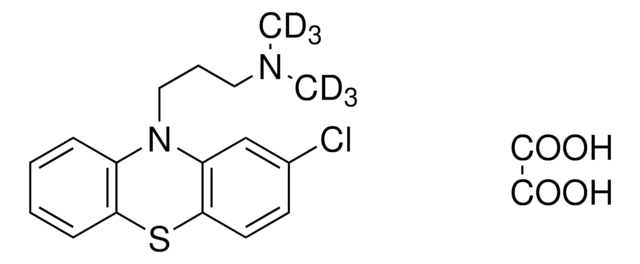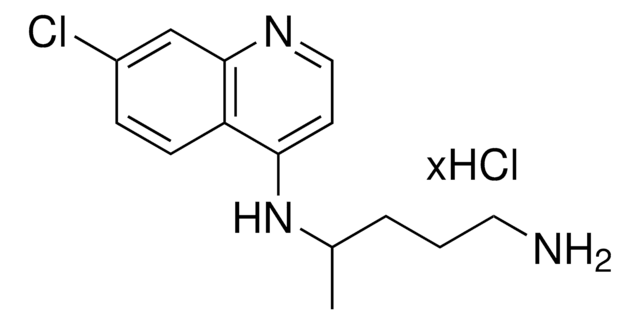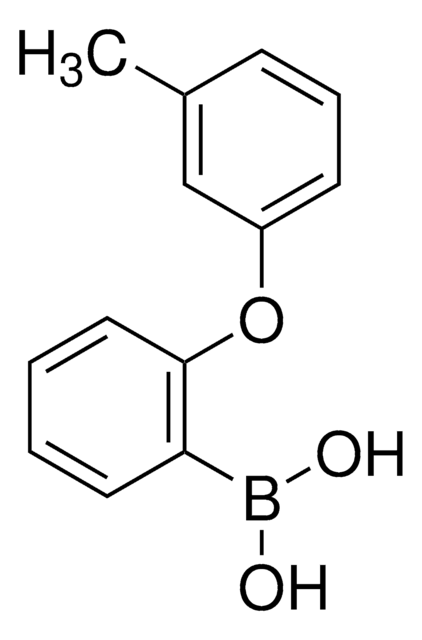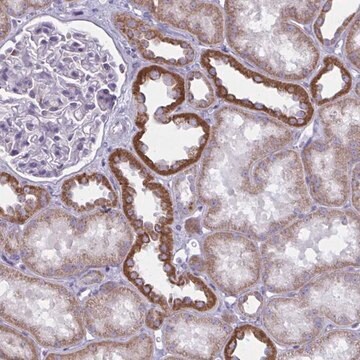SML0064
MBX-102
≥98% (HPLC)
Synonim(y):
(aR)-4-Chloro-a-[3-(trifluoromethyl)phenoxy]benzeneacetic acid 2-(acetylamino)ethyl ester, Arhalofenate, JNJ39659100, MBX-102/JNJ39659100
About This Item
Polecane produkty
Próba
≥98% (HPLC)
Postać
powder
kolor
white to tan
rozpuszczalność
DMSO: ≥35 mg/mL
inicjator
Johnson & Johnson
temp. przechowywania
2-8°C
InChI
1S/C19H17ClF3NO4/c1-12(25)24-9-10-27-18(26)17(13-5-7-15(20)8-6-13)28-16-4-2-3-14(11-16)19(21,22)23/h2-8,11,17H,9-10H2,1H3,(H,24,25)/t17-/m1/s1
Klucz InChI
BJBCSGQLZQGGIQ-QGZVFWFLSA-N
Zastosowanie
Działania biochem./fizjol.
Cechy i korzyści
Hasło ostrzegawcze
Danger
Zwroty wskazujące rodzaj zagrożenia
Zwroty wskazujące środki ostrożności
Klasyfikacja zagrożeń
Acute Tox. 3 Oral - Aquatic Acute 1 - Eye Irrit. 2
Kod klasy składowania
6.1C - Combustible acute toxic Cat.3 / toxic compounds or compounds which causing chronic effects
Klasa zagrożenia wodnego (WGK)
WGK 3
Temperatura zapłonu (°F)
Not applicable
Temperatura zapłonu (°C)
Not applicable
Certyfikaty analizy (CoA)
Poszukaj Certyfikaty analizy (CoA), wpisując numer partii/serii produktów. Numery serii i partii można znaleźć na etykiecie produktu po słowach „seria” lub „partia”.
Masz już ten produkt?
Dokumenty związane z niedawno zakupionymi produktami zostały zamieszczone w Bibliotece dokumentów.
Produkty
Peroxisome proliferator activated receptors (PPARs) are ligand-activated transcription factors related to hormone receptors, influencing gene expression.
We offer many products related to non-steroid nuclear receptors for your research needs.
We offer a variety of small molecule research tools, such as transcription factor modulators, inhibitors of chromatin modifying enzymes, and agonists/antagonists for target identification and validation in gene regulation research; a selection of these research tools is shown below.
Nasz zespół naukowców ma doświadczenie we wszystkich obszarach badań, w tym w naukach przyrodniczych, materiałoznawstwie, syntezie chemicznej, chromatografii, analityce i wielu innych dziedzinach.
Skontaktuj się z zespołem ds. pomocy technicznej